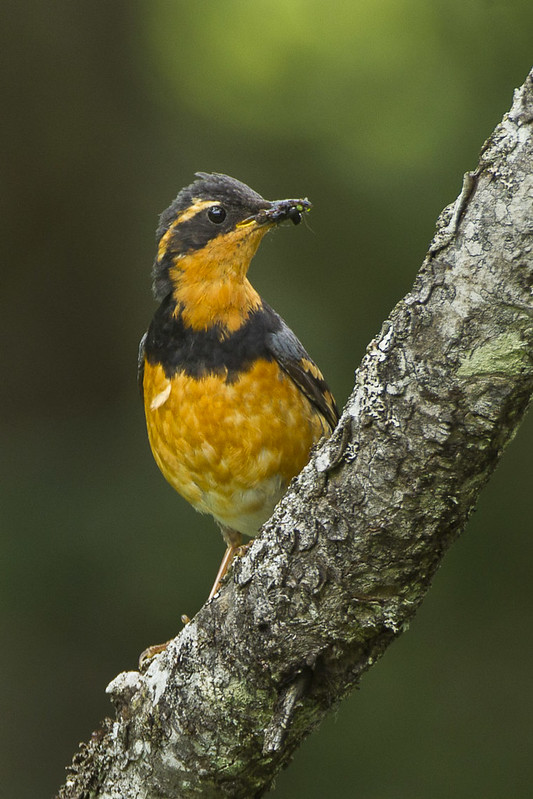A bird wearing an exquisite combination of blue-gray, orange, and black, is often described as the voice of the northwest.

Meet the Varied Thrush

The varied thrush (Ixoreus naevius) is similar in size to the American Robin and has a greyish-blue crown, nape, rump, and tail. An otherwise black face has an orange eyebrow and throat. There is also a blackish band somewhat resembling a necklace running across the breast from eye to eye. The upperwings are slate-grey with two orange wing bars, as well as an orange patch on the wings which is visible when they are open. the belly is a mixture of orange and slightly mottled grey. The flanks are grey and the vent is white.

The female closely resembles the male, though appears duller in comparison with a grey chest band.
The juvenile is similar to the female, though with a whitish belly, and a scaly-looking throat and breast.

This bird breeds in western North America from Alaska down into northern California.

Varied Thrush is commonly found in dense and moist woodlands, mainly coniferous forests. It winters in woodlands, parks, and gardens.

Ground feeders, Varied Thrush feed on insects and berries often scratching amongst leaf litter searching for morsels. In winter, it feeds mainly on berries, seeds, and acorns. In summer, they eat insects and other invertebrates.

Varied thrush females usually build an open cup-shaped nest in low bushes, near a stream, or in a tree at the base of a branch near the trunk. The nest is built from a variety of twigs, leaves, lichens, and bark. She then lays a clutch of 1 – 5 eggs within which are a greenish-blue mottled with brown. She incubates her eggs for 12 – 14 days, after which the young hatch and are fed by both parents. The young are fledged at about 13 to 15 days.

Varied Thrushes are threatened by deforestation and clear-cutting, but they are not yet endangered in any portion of their range.
